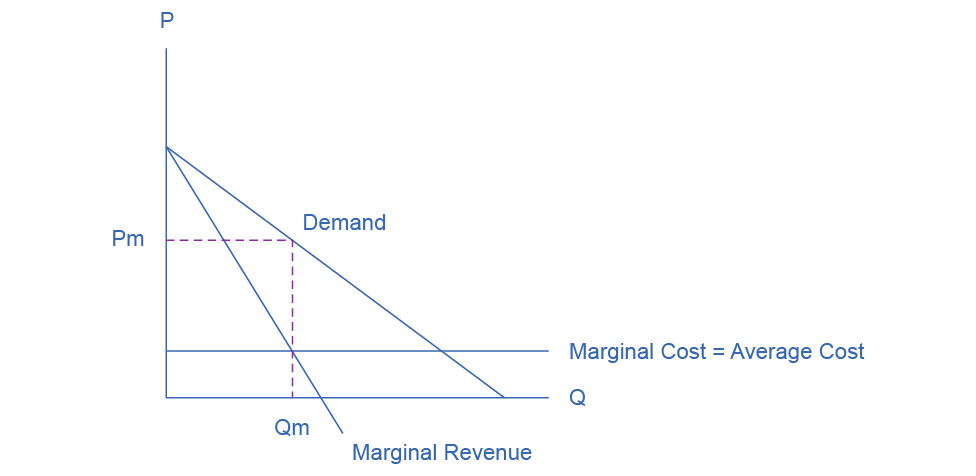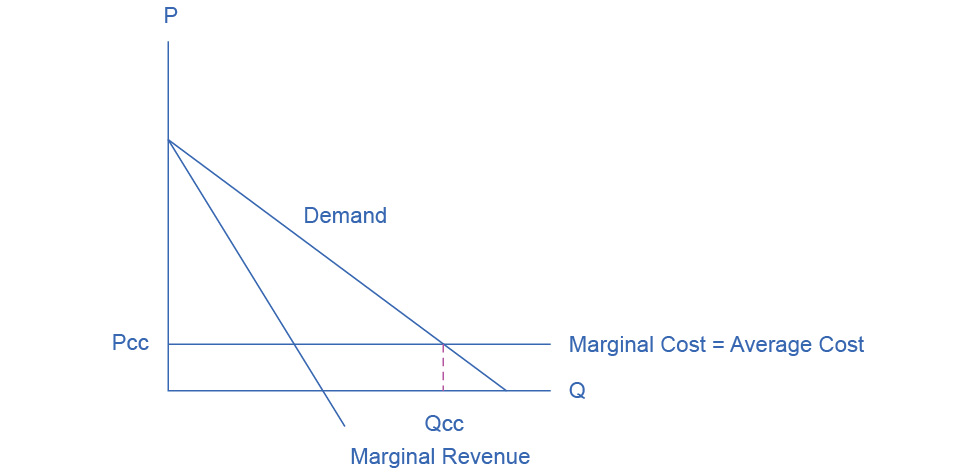136 Chapter 9 Monopolistic Competition and Oligopoly Answer Key
Chapter 9 Monopolistic Competition and Oligopoly Answer Key
1. An increase in demand will manifest itself as a rightward shift in the demand curve, and a rightward shift in marginal revenue. The shift in marginal revenue will cause a movement up the marginal cost curve to the new intersection between MR and MC at a higher level of output. The new price can be read by drawing a line up from the new output level to the new demand curve, and then over to the vertical axis. The new price should be higher. The increase in quantity will cause a movement along the average cost curve to a possibly higher level of average cost. The price, though, will increase more, causing an increase in total profits.
2. As long as the original firm is earning positive economic profits, other firms will respond in ways that take away the original firm’s profits. This will manifest itself as a decrease in demand for the original firm’s product, a decrease in the firm’s profit-maximizing price and a decrease in the firm’s profit-maximizing level of output, essentially unwinding the process described in the answer to question 1. In the long-run equilibrium, all firms in monopolistically competitive markets will earn zero economic profits.
3. If the firms form a cartel, they will act like a monopoly, choosing the quantity of output where MR = MC. Drawing a line from the monopoly quantity up to the demand curve shows the monopoly price. Assuming that fixed costs are zero, and with an understanding of cost and profit, we can infer that when the marginal cost curve is horizontal, average cost is the same as marginal cost. Thus, the cartel will earn positive economic profits equal to the area of the rectangle, with a base equal to the monopoly quantity and a height equal to the difference between price (on the demand above the monopoly quantity) and average cost, as shown in the following figure.
The firms will expand output and cut price as long as there are profits remaining. The long-run equilibrium will occur at the point where average cost equals demand. As a result, the oligopoly will earn zero economic profits due to “cutthroat competition,” as shown in the next figure.
Pc > Pcc. Qc < Qcc. Profit for the cartel is positive and large. Profit for cutthroat competition is zero.
4. Firm B reasons that if it cheats and Firm A does not notice, it will double its money. Since Firm A’s profits will decline substantially, however, it is likely that Firm A will notice and if so, Firm A will cheat also, with the result that Firm B will lose 90% of what it gained by cheating. Firm A will reason that Firm B is unlikely to risk cheating. If neither firm cheats, Firm A earns $1000. If Firm A cheats, assuming Firm B does not cheat, A can boost its profits only a little, since Firm B is so small. If both firms cheat, then Firm A loses at least 50% of what it could have earned. The possibility of a small gain ($50) is probably not enough to induce Firm A to cheat, so in this case it is likely that both firms will collude.
Access for free at https://openstax.org/books/principles-economics-3e



